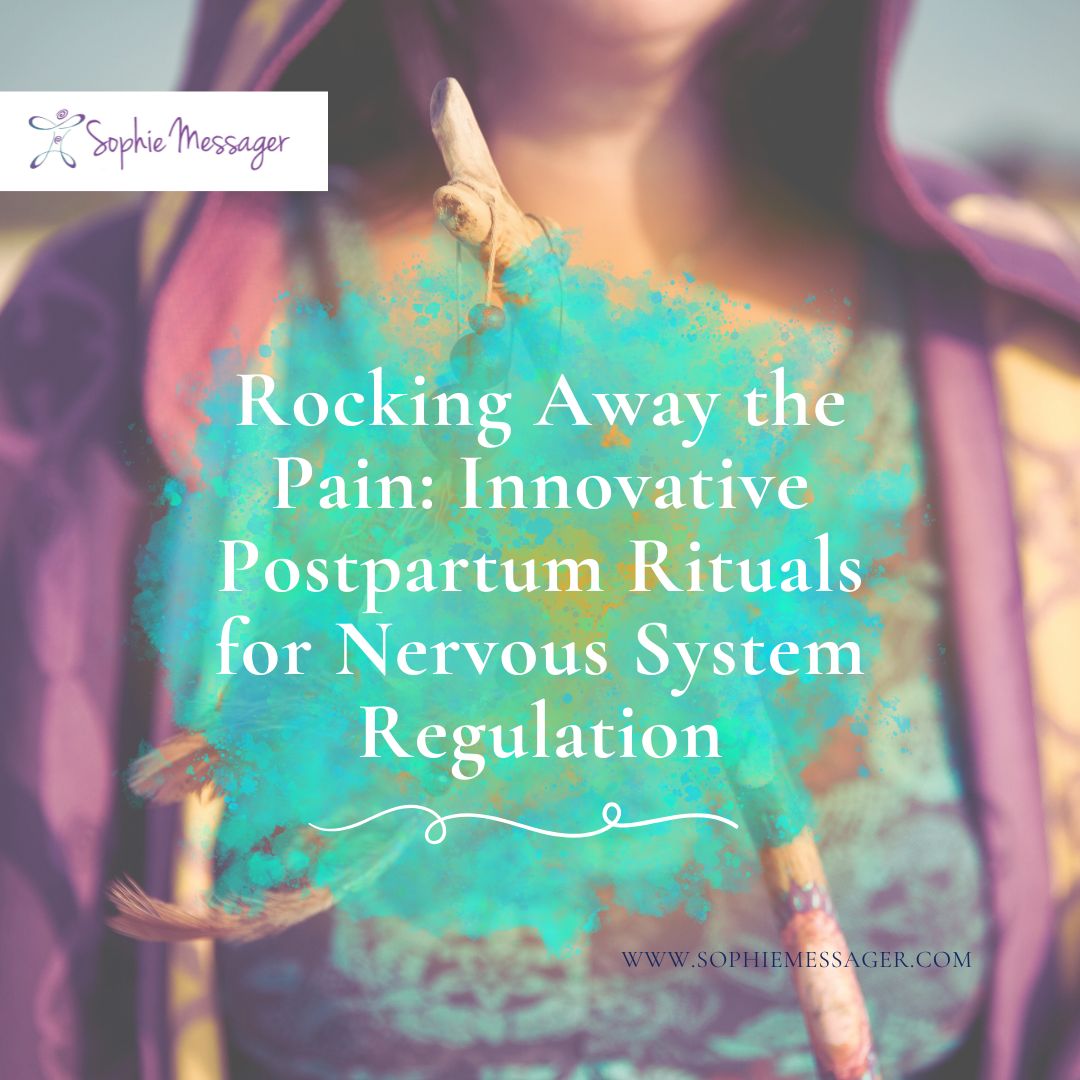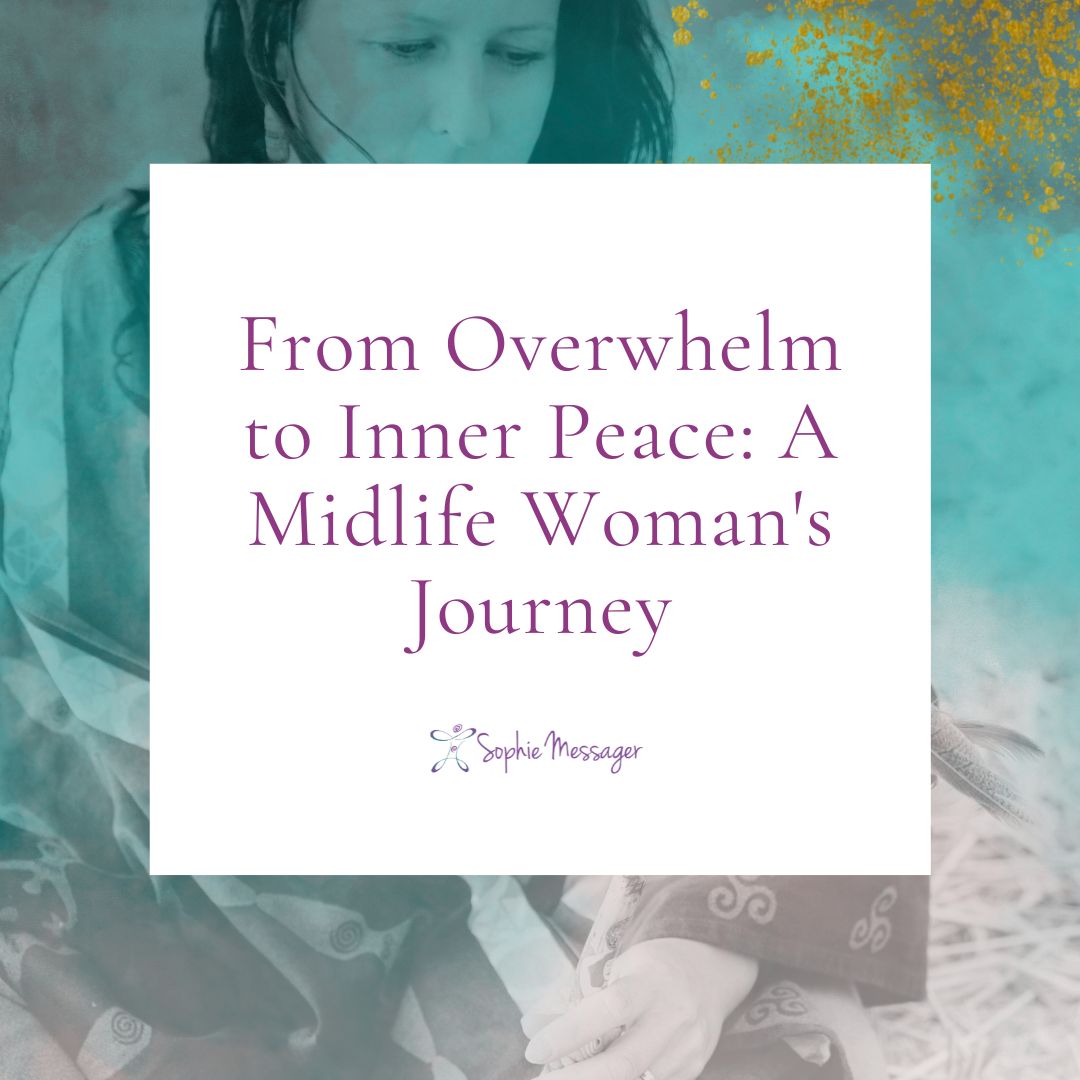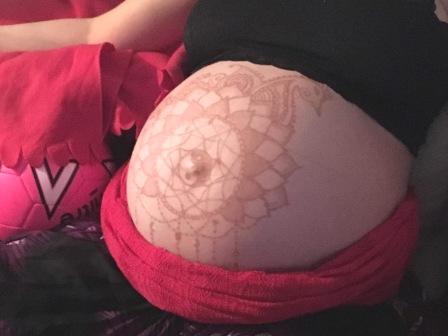If you follow me you’ll know that I’ve navigated more than my fair share of challenges over the last couple of years.
I’ve supported one of my children through severe mental health issues, I’ve navigated the ups and downs of perimenopause, and I discovered that I have ADHD (I got formally diagnosed a couple of weeks ago and I plan to write another post about this). It’s not been an easy time to say the least. When I look back I can see that I’ve experienced chronic stress for 2 years.
And yet, I also want to know that these challenges are somewhat linked and have all the hallmarks of a rite of passage. And that, despite the challenges, I already know that when I fully come out the other side, I will be happier than I was before. In my case, the growth has been commensurate with the level of pain.
A couple of weeks ago I attended a talk about ADHD and women. One graph in particular drew my attention. It showed the peaks and troughs of hormones during perimenopause. It looked like this:

The messy ups and downs of hormones in the middle made me think: no wonder my world is in chaos. The chaos isn’t just outside of me, it’s inside as well! It reminded me of my experience of puberty, and also of the first few weeks of postpartum (where I also had big emotional ups and downs, and terrible night sweats). The messy hormone curve has all the hallmarks of a rite of passage, where there is no solid ground beneath your feet, where you no longer know who you are, where you have to face the scariest monsters, and where who you were, literally, has to die, to give birth to the new you.
Added to that, over the last year, my ADHD symptoms increased to a level that has made daily life very difficult. I felt constantly overwhelmed, because within 5 min of getting up I would see ALL THE THINGS that needed doing, and be unable to prioritise them. For example I’d start making coffee, then see that the dishwasher needed emptying, and on the way to that, that the dog’s water bowl needed refilling, that the recycling bin needs emptying, and I would start each task without finishing it, moving to the next and so on. This video illustrates the issue so well! I was aware that I was doing this, but unable to stop myself. I also got woken up several times a night, with night sweats and a racing heart. This would trigger anxiety, as I worried about all the things I wasn’t doing, this would often keep me awake for an hour or more. I would then wake at 5am with the anxiety mindset, and would not be able to go back to sleep So on top of the low mood, anxiety and overwhelm, I also felt exhausted. How I’ve managed to keep the wheels on my small one woman self-employed business is unbelievable.
I truly believe that everything is linked. There is evidence that the hormonal changes of perimenopause exacerbates the symptoms of ADHD. It certainly was the case for me, as my symptoms didn’t become unmanageable until last year. However, since I started reading about neurodivergence and discovered I have ADHD, when I look back, these symptoms had been rising steadily since I started my perimenopause journey in 2012.
Hindsight is a wonderful thing, but I feel that one of the big issues is that we no longer have rites of passages accompanying huge life changes. Just like puberty or becoming a mother, perimenopause is completely unsupported from a community and spiritual point of view, and seen only through a pathological lens.
Over the last year, on many occasions, I have felt such empathy for what I describe happens to new mothers, in my book, Why Postnatal Recovery Matters. The need for community support, for rest, for good food (provided by others), and for nourishing bodywork have felt so relevant. I have felt such longing for this myself, and often fantasised about what my life would be if I lived in a close knit community of women. I believe the same needs apply during the perimenopause, as well as during any other big life transition times. We simply cannot do it alone.
When we no longer have the support of our community to help us navigate big life transitions, we suffer. When our culture is blind to the need for support during these times, unable to see it for the transformation that it is AND when our culture also depicts the transition in negative terms only, then we are completely lost at sea.
To ride those big transitions, we need to be supported by groups of people who have experienced them, and who can support us through it from a place of gentle understanding and holding. Sadly, the generations before us have also lost this knowledge too, and there is therefore very little holding available. Nobody even remembers that it is a thing!
Even deep into the depth of the challenges, I felt that the discomfort, the stripping, were all clearing me for something new. times for the last year or so, as I’ve had to undergo more growth, at a faster rate than I’ve ever had in my life. I already feel how much spaciousness, openness and tolerance this growth has given me. It’s made me aware of unhelpful patterns in my brain, and as I am aware of them, I am no longer run by them. Starting microdosing was instrumental in this, and so did working with a neurodivergent coach.
This doesn’t mean that there hasn’t been deep pain and a desire to escape it all. As I write this I am aware that a lot of the pain, as it was in those first few weeks of motherhood, stems from wanting my life to be like it was before. The pain is caused by resistance, and by a desire to run away from the pain. When I sink into it, when I stop fighting it, it’s never as bad as I feared.
But, similarly to the fact that I, and many of the new mothers I have supported as a doula, struggle to adjust to the slower pace of new motherhood and often run themselves ragged by trying to do all the things they did before had a baby (I’ve heard some many new mothers say “I’m not doing anything”), so too does my pain stems from refusing my body’s demand for slowness and rest (which I know is easier said than done as a busy mother of special needs children, but still: the deepest pressure was the one I created myself)
In the book Second Spring, Kate Codrington talks about the possibility of a menopause gap year. Since the beginning of my perimenopause 10 years ago, I have longed on many occasions to run away from the demands of family life, and entertained dreams of living in a commune of midlife women, tending the land and doing simple crafts. I have longed for peace, and for a slower pace of life, connected to the land and to a community of like minded people.
I think that’s where the lack of support from society has been the hardest. How on earth are we supposed to pause, to find space for peace and rest, in the midst of the demands of family life in the Western world? I also cannot help but wonder if motherhood later in life (my children were born when I was 35 and 39 and I’m 53 as I write this), means that I have teenagers, when ideally by now they would have already flown the nest and I wouldn’t need to provide so much care?
If we lived in tribal society, or at least in medium sized communities of people who knew each other, then I imagine that 1) there would be elders who would understand, help understand, and support the process 2) the chores and demands of family life would be shared, this would lighten the load AND meet the needs for human connection, making this time feel easier on so many levels.
Instead of the support, not only have I had to undergo the transition with neither map nor support, but the added mental health challenges of my child have made an already difficult time unbearable. It’s perhaps no wonder that, now that I am finally out of a deep crisis and survival, my body has collapsed.
The thing is, you cannot “cure” the rite of passage. You just have to go through it, whether you like it or not. My tunnel has been long and dark and every time I thought I was finally due a break, something worse happened instead.
In March we got the news that the funding for my youngest child to attend the small nurturing specialist school I spent 2 years fighting for, was successful. Instead of feeling better, my system crashed. I spent a night in A&E in the worst pain I had ever experienced, and a CT scan showed a kidney stone. I then concussed myself because I fainted due to the pain and hit my head, and had to spend a week in bed instead of going on the beautiful, much overdue holiday I had booked for my family to celebrate. Then for most of April, I felt the worst mood swings, tearfulness and exhaustion I had ever felt. I would go to bed at 8h30 and still waking up tired. I felt joyless. I became so tired and fed up with feeling like this. I desperately needed space to breathe, and feel like my normal self again. I longed for peace and calm.
I recently got diagnosed with ADHD, but even with the right to choose route, I am now on a 6 month waiting list before I can start titration (and I’m not sure ADHD drugs are something I want to take for the rest of my life either, having tried some already, read about this here). My GP ordered a bunch of blood tests, and suggested I try HRT. My first response to this was a complete no, because I feel that using drugs that put a lid on symptoms doesn’t resolve the underlying issue. My instinct also told me that they may prevent the spiritual development that goes with the drop in hormones.
However, over the last 10 years I’ve tried many different holistic approaches (and one less holistic): I’ve worked with 2 herbalists, I’ve tried CDB oil and many other supplements, meditation, acupuncture, homeopathy, family constellations, counselling, coaching, EFT, MAP, microdosing, antidepressants, emotion doodling, and more forms of bodywork and healing that I care to count (somatic massage, thai massage, reflexology, osteopathy, lomi-lomi, bowen, Rolfing, TRE, sound healing, Reiki, and more). They all provided some healing and some respite, but I was now in a place where none of these holistic approaches seemed to be enough anymore.
I also developed regular weekly nurturing practices (all of which I can now see are dopamine raising activities), such as wild swimming, drumming in nature, and 5thythms dancing. When I started doing these, and a for a few years, they had a deep transformative effect on my wellbeing, and brought me calm and joy. Today, they still sustain me, and are an important part of my wellbeing, but somehow aren’t enough to keep me in a place of trust and peace.
I had a chat with my neurodivergent coach, and she said that I wasn’t just coping with the menopause but with a lot of other challenges at the same time. She said that I could try HRT and see if it worked for me, and this was useful as I think I felt that it was all or nothing. In 2022 I tried antidepressants and hated it, and I thought this might be worth a try, at least to know if it helped or not.
In my typical fashion (thank you ADHD hyperfocus!) I researched HRT deeply prior to the appointment with my GP to discuss it. I joined groups, I read books and articles, I spoke to a lot of people. One of my fears was that it would stop me from undergoing the spiritual development that comes with the menopause. I reached out to menopause mentor Kate Codgrinton, as I’m reading her book, Second Spring. When I mentioned my concerns, she said that some women found that the HRT sometimes helped their spiritual growth, giving them more time and space to put helpful practices in place in their lives. In Second Spring there is a section about HRT, and it fits with what I believe. Menopause, Kate says, is a caterpillar to butterfly process. The hormones support can help you stay a strong caterpillar but not support you to become a butterfly. Reading this, I realised that I needed to be a strong caterpillar for my family at the moment.
My fears alleviated, I decided to give HRT a try. I started taking it last week after researching the different forms (I choose to have the estrogen gel and micronised progesterone. I particularly like Dr Newson’s prescription guide to HRT). I could feel a difference within 3 days of starting the estrogen gel, with improved mood, sleep, and energy.
Just as I’d hoped, a week on, not only do I feel calmer and happier and have more energy, I also have enough spaciousness inside of me to start looking at my life and putting things into place to feel better. I spoke to my coach about things I could do to improve my mental health and she suggested I make a jar with activities I can do when I feel low. She said when you feel stressed you cannot think. I made the jar there and then (when before the idea of having another task filled me with dread), and I was surprised by the list of ideas I wrote (once I got going I realised that I had a lot more ideas than I thought. You can find my list below.
The re-regulating / grounding jar list
- Go for a walk (with the dog)
- Cuddle/play with the dog
- 5 min dancing (Use Tankwa Town track which is like a a short 5rhythms wave Daniel’s joik track, or the Double Touch track depending on mood and need)
- Craft something (even if only for 5 min)
- Doodle how I’m feeling (draw a person with thought bubbles)
- Go to the river (swim or just contemplate)
- Sensate break (10 min)
- Self Reiki (10 min)
- Drum (10 min)
- Rebozo self massage (5 min)
- Meditate (5 min)
- Breathe slowly (5 min)
- Smudge myself and/or my space
- Sway hips (5 min)
- Breathe against a wrapped rebozo
- Notice things I can see, smell, hear
- 5 min gratitude (think, write, or speak)
- Take some rescue remedy sweets (easier to consume mindfully)
- Diffuse or sniff uplifting or calming essential oil blend
- Walk bare feet on the earth
- Touch trees/plants

If you want to create one for yourself, feel free to be inspired by my ideas, but make sure you add stuff that works for your unique self too. And remember that, if you pick a paper in the jar and you don’t like it, you can put it back and choose something else!
Time will tell if it works, but writing the list uplifted me, as I realised I have more options/knowledge than I thought, and I also noticed that these activities are more likely to work for me than a list written by a stranger. You’ll notice that a lot of the activities are short. This is because when I feel low, I have resistance to doing anything, and I’m more likely to want to do something that takes 5 min than 20. Incorporating micro habits like this in my life feels do-able. And more importantly, it also feels like something that can bring restoration to my life in real ways, rather than waiting for something that takes a couple of hours like a massage.
I hope you find this useful and helpful if you are experiencing similar challenges. I would love to hear about your experience.














